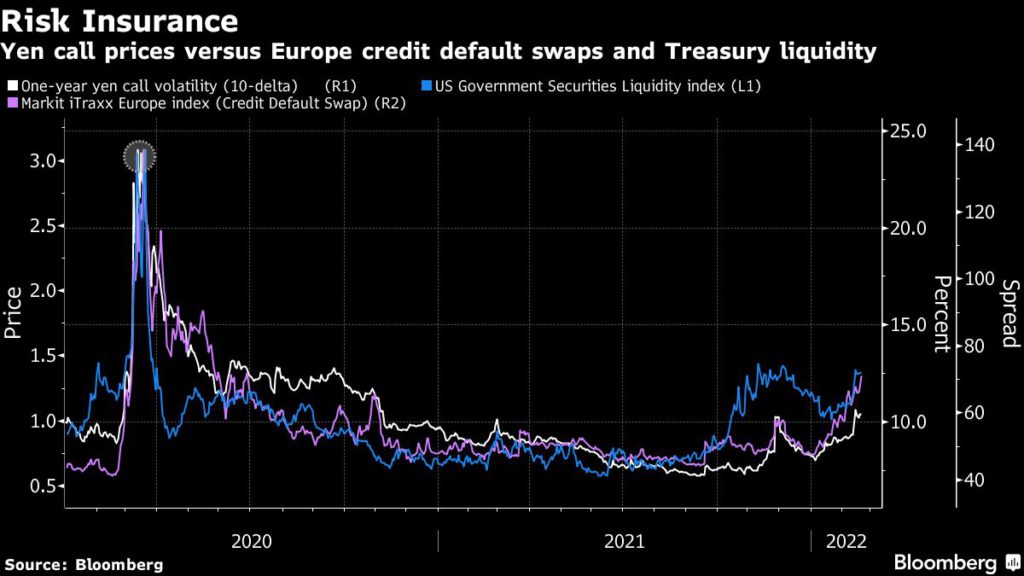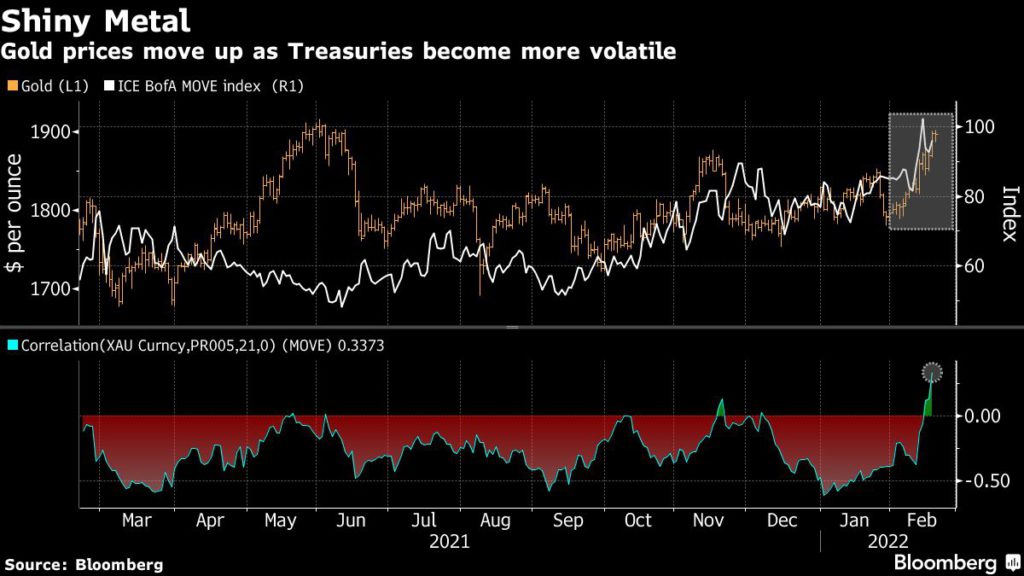Following is a brief look at how some of those are stacking up at the moment.
A place yuan to be?
With interest rates rising across much of the world in response to inflation pressures, China’s market is a standout where the bias for policy is more toward easing and consumer-price pressures appear relatively more contained. Yet even with the central bank keeping policy accommodative, the offshore renminbi is around its strongest level in close to four years against the dollar.
The currency is one of Asia’s top performers in a year that’s seen the S&P 500 tumble more than 8% and its three-month volatility of less than 4% is well below most major peers.
And unlike many developed markets it already offers short-term interest rates above 2%, providing some protection against not only downturns in more speculative markets, but also a buffer against the kind of duration risks that many investors in U.S. rates face.

Calling all yen
The yen is a more traditional haven for foreign-exchange types and while the currency’s spot performance this year may not appear at first glance to be anything spectacular, behavior within the options market suggests that investors are looking to it as an insurance bet.
On a spot basis it has traded defensively amid rising Treasury yields and higher commodity prices, but call option costs have been edging higher and tilting the smile curve. Option skews turned noticeably in favor of the Japanese currency in late November, soon after the outbreak of the omicron variant and as Fed officials bolstered inflation concerns.
Yen call volatility has been closely tracking the rise in credit costs in Europe and measures of Treasury market liquidity, suggesting that some participants see Japanese currency options as a hedge against potential turmoil.

Going for gold
Gold has long been a go-to place of safety, but it’s far from a perfect hedge. The most recent weeks of risk aversion have seen the precious metal once more becoming negatively correlated with assets like U.S. stocks, having spent much of early 2022 moving in similar directions.
Gold prices have surged to their highest level since June 2021 as geopolitical tensions over Ukraine build and measures of consumer inflation in major developed economies exceed forecasts, while increased concern could keep fueling that rise.
For currency traders, the key upshot is that gold strength has historically been associated with weakness in the U.S. dollar, although that inverse correlation has ebbed somewhat since reaching it highest level in more than a decade in mid-2021.

(By Robert Fullem)
Read More:Traders explore FX havens as rising rates dent case for bonds
2022-02-20 23:58:09
